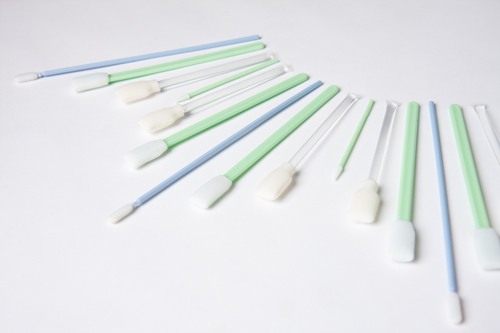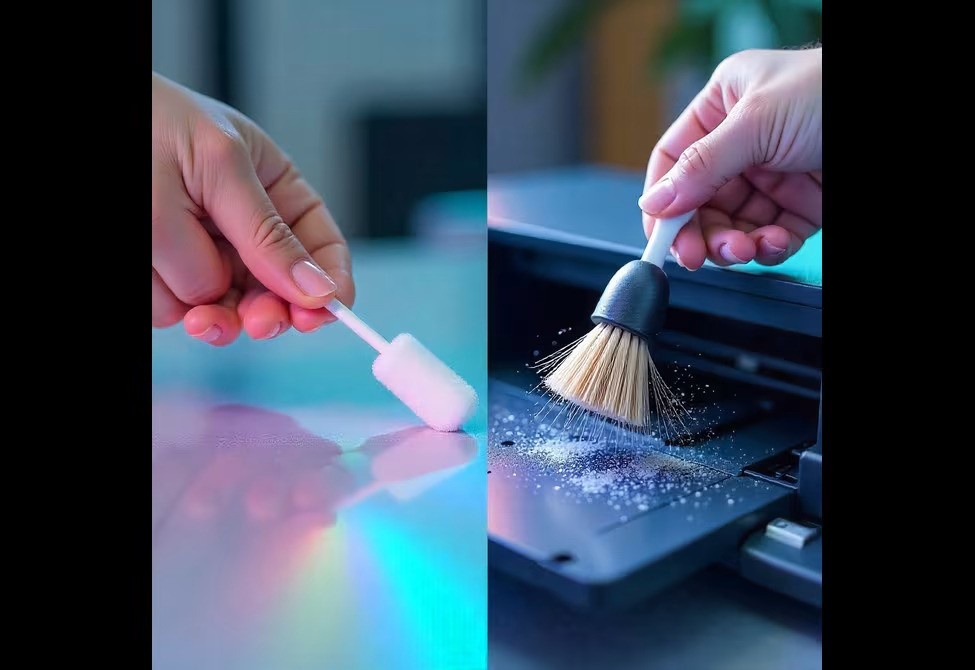Swabs
Foam Swabs vs. Brush Cleaners: Which Is Best for Commercial Printers?
When it comes to preserving the optimal print quality and performance, cleaning tools become more important than you think. In this guide, we will be comparing Foam Swabs vs Brush cleaners, which of them are better for commercial printers, and how to choose the right cleaning method for better durability, safety, and print clarity.
What Are Foam Swabs?
Foam cleaning swabs are lint-free, soft polyurethane swabs with a plastic handle used for precise cleaning. They are frequently utilised in electronics, medical devices, and—most importantly—commercial printer maintenance because they are made for delicate surfaces.
Key features of foam swabs:
- Non-abrasive and lint free
- Perfect for delicate printheads
- Compatible with solvents
- Reaches confined, narrow areas
- Precision tip designs
- Reusable and disposable
What Are Brush Cleaners?
Conventional brush cleaners are made of natural bristles or nylon. They are used to remove dust, debris, and dried ink from wide surfaces, rollers, and mechanical components.
Key features of brush cleaners:
- Able to clean large surfaces
- Mostly reusable
- Perfect for clearing away dried ink or built-up toner
Limitations: Unsuitable for delicate parts like printheads; may shed bristles..
Foam Swabs vs Brush Cleaners: Which one is Right for Cleaning needs
| Feature | Foam Swabs | Brush Cleaners |
| Material | Soft polyurethane foam | Bristles (nylon/natural) |
| Ideal for | Printheads, sensors, nozzles | Rollers, cartridges, outer casing |
| Lint/Residue | Lint-free | May leave bristles |
| Precision Cleaning | Excellent | Limited |
| Solvent compatibility | High | Moderate |
| Abrasiveness | Minimal | Can be abrasive |
Why Foam Swabs Are Ideal for Commercial Printers
If professionals have to choose between Foam Swabs vs Brushes Cleaners, they opt for foam swabs because of their precision, safety, and compatibility. They don’t run the risk of leaving residues or scratches like brushes do.
Advantages of Using Foam Swabs for Commercial Printers:
- Safe high resolution printheads
- Access deep and narrow spaces
- Prevent print defects caused by leftover debris
Foam swabs offer focused, damage-free cleaning for printers such as Zebra, Canon industrial models, and Epson label printers.
When to Use Brush Cleaners Instead
Brush cleaners are useful for maintaining commercial printers, even with the benefits of foam swabs. They work well for:
- Cleaning external shells
- Dust removal from large areas
- Removing tough dirt from wide areas
Brush cleaners can still be useful when cleaning non-electronic components or when removing thick accumulation.
Conclusion: Foam Swabs vs. Brush Cleaners—What’s Better?
Foam swabs are a better option for most commercial printing environments. They are ideal for routinely cleaning printheads and sensors because they are precise, safe, and lint-free. Brush cleaners work well for general dusting or stubborn areas, but not appropriate for delicate parts.
When it comes to Foam Swabs vs Brush Cleaners choose foam swabs for delicate internal parts and brush cleaners for external upkeep when deciding between the two. Often, a hybrid strategy is most effective.
Frequently Asked Questions (FAQs)
1. Can my commercial printer be harmed by foam swabs?
No, foam cleaning swabs are made especially for delicate surfaces like printheads and nozzles and are not abrasive.
2. Can brush cleaners be reused?
While many brush cleaners are reusable, their cleaning efficacy may be impacted over time by bristle loss or wear.
3. What kind of solvent is most effective when used with foam swabs?
For cleaning commercial printers, foam swabs are frequently used in conjunction with ethanol-based solutions and isopropyl alcohol (IPA).
4. Do foam swabs produce residue or lint?
No, high-quality foam swabs are perfect for precision cleaning because they are lint-free and leave no residue behind.
5. How often should I clean my commercial printer?
You can use foam swabs to clean your printer once every two weeks or as directed by the manufacturer for best results.
 Skip to content
Skip to content


